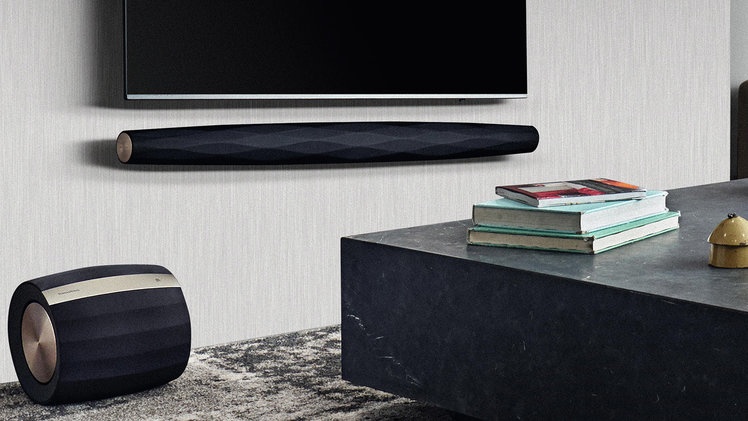
The Bowers & Wilkins Formation Bar is a three-channel soundbar that forms part of the company’s multiroom and multichannel platform.
The Formation system uses a proprietary mesh network that promises a robust connection and superior performance. However, aside from its networking capabilities the Bar is surprisingly limited in terms of features, so it needs to sound good if it’s to justify a fairly hefty price.
Is it worth the outlay, or is it all style over substance?
Stylish looks and solid engineering
- Soundbar: 1240 x 109 x 107mm; 5.5kg
- Available in black
The Bowers & Wilkins Formation Bar certainly looks the business, but to be honest you’d expect nothing less from the venerable speaker manufacturer. The design oozes high-end class, with a cylindrical shape that tapers to brushed metal end plates at either side. The soundbar is almost entirely covered by a black fabric grille that’s stretched over a diamond-shaped honeycomb frame.
The elegant and stylish look doesn’t unnecessarily draw excess attention to itself – which is exactly how a good soundbar should be designed. It’s all about the sound quality, rather than flashy looks. The Bar is also very well made, with a nicely engineered feel and plenty of weight – suggesting quality drivers within. In terms of installation, there’s a choice of stand- or wall-mounting.
B&W Formation Bar features
- Proprietary Formation mesh network
- 3-channel audio from soundbar
- Dolby Digital and DTS support
- Formation multiroom system
- Optional rear speakers
- Optional subwoofer
A major feature here is B&W’s proprietary Formation mesh network. This can stream audio at a resolution of up to 24-bit/96kHz, and is designed to use both the 2.4GHz and 5GHz frequencies found in a normal wireless network. Information reaches the Bar via its 2.4GHz receiver, while other Formation devices use the 5GHz frequency to communicate with each other over the mesh network. As a result B&W claims a delay of one microsecond, and because the various Formation products are communicating via their own network, they aren’t taking up bandwidth on your home router. This added benefit is sure please anyone with an over-worked Wi-Fi network.
The problem with B&W’s implementation of its Formation system is that to get the most out of it requires further expense. For starters you’ll need multiple B&W products. Furthermore, if you want the full 24-bit/96kHz experience you’ll need to shell-out for Roon, which enquires an annual fee of $119/£95.
The Bar is also limited to lossy audio formats like Dolby Digital, so you can forget immersive formats like Dolby Atmos and DTS:X. However, it can decode 5.1, so while the Formation Bar is designed as a stand-alone unit, there’s a wireless expansion option if you feel the need for more bass or surround speakers. But like everything else with this system it’s expensive.
If you want to improve the low-end performance you’ll need to buy the Formation Bass subwoofer, which costs £899/$799. If you want surround channels that means buying a pair of Formation Flex speakers £399/$359. So the total cost of building a wireless 5.1-channel system that’s still restricted to lossy audio codecs is a wallet-busting £2,700/$2,500.
Connections and controls
- 1x optical digital input; 1x Ethernet
- Wi-Fi; Bluetooth; AirPlay 2
- Formation app (iOS/Android)
The Bowers & Wilkins Formation Bar’s biggest limitation is the general paucity of physical connections. Look around the back and all you’ll find is a single optical digital input and an Ethernet port for a wired connection. That’s it. No HDMI, which means no ARC (audio return channel).
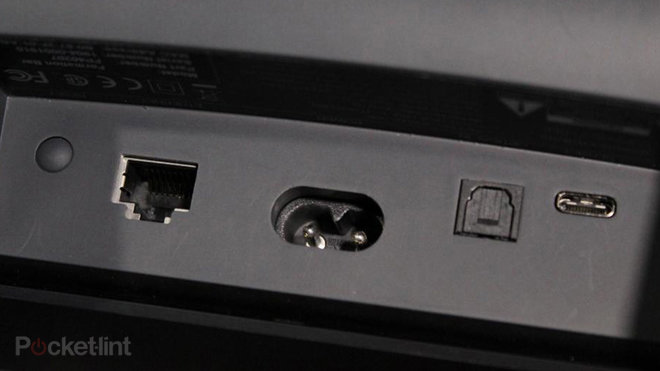
B&W claims the custom install market often avoids HDMI, but that seems like a poor excuse for a soundbar costing around a grand. Like all Formation products, the Bar also includes built-in Wi-Fi, Bluetooth 4.1 (AptX HD )and Apple AirPlay 2.
Things don’t get much better when it comes to controlling the Formation Bar. On the unit itself there’s no display, and only basic controls for play/pause, volume, and and setting up a Formation network. However, if you’re thinking “that’s OK I’ll just use remote control”, then you’re in for a surprise.
Despite its price tag, the Bar doesn’t come with a separate remote control. The soundbar can learn some basic controls from your TV’s infrared remote, but if that uses RF then you’re stuffed. B&W basically expects you to use the Formation app as your primary method of control, but not everyone wants to grab a smartphone or tablet just to change the volume.
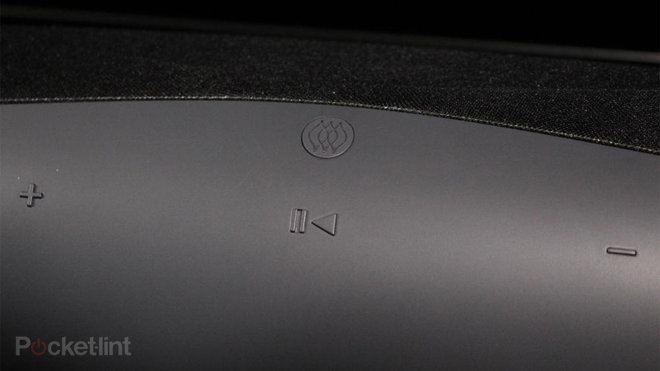
At least the app offers a well-designed user interface, making it easy to setup up the Formation mesh network, and add new devices to it. However, as a remote it’s fairly basic, and this is an area where more work is required from Bowers & Wilkins. The big problem is most of the control aspects are delegated to third-party apps, making the Formation app itself lack usefulness.
Accomplished yet limited performance
- 3 channel audio from soundbar:
- 1x 25mm ‘double dome’ tweeter
- 2x 65mm woven glass fibre mid/bass woofers
- Frequency response: 40Hz to 28kHz
The Bowers & Wilkins Formation Bar is very easy to setup, but given the lack of a separate subwoofer and its limited connections that’s hardly surprising. All you need to do is position the soundbar under the TV, and choose between stand- or wall-mounting. If you decide on the former, check the clearance under your screen because the Bar is quite high at 109mm.
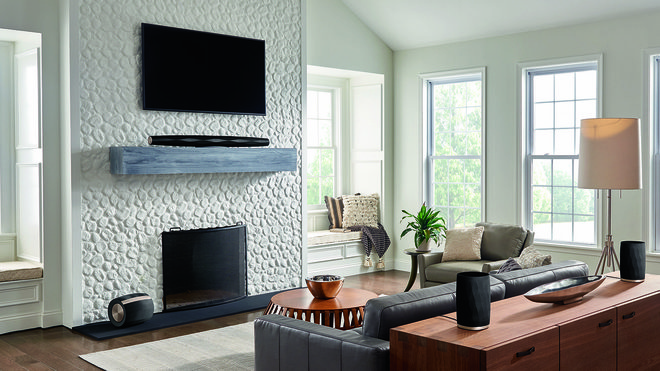
Then all you need to do is connect your TV using the optical digital input and setup the Formation network using the app. This allows you to connect the Bar to your home Wi-Fi network, and once complete, your Bar will play an audio prompt to confirm successful setup. The Bar is also paired with a Bluetooth device using the app, and once again there’s an audio prompt when pairing is complete. If there is a firmware update available, the app will tell you and automatically install it.
The Formation Bar certainly delivers the goods sonically, with a wide front soundstage and plenty of grunt. The midrange is clean and detailed, while the high-end never sounds sharp or harsh. The dedicated centre channel ensures dialogue is always clear and focused on the screen. The lower frequencies are well defined, but never feel as deep as the claimed spec of 40Hz.
Where the Bar sounds particularly good is with music. Thanks to the width of the unit, the stereo imaging is excellent, and the placement of instruments is very precise. This gifted musical delivery extends to TV shows, where the score or any music is spread across the front of the room. Effects are placed around the screen, and dialogue retains an impressive level of clarity.
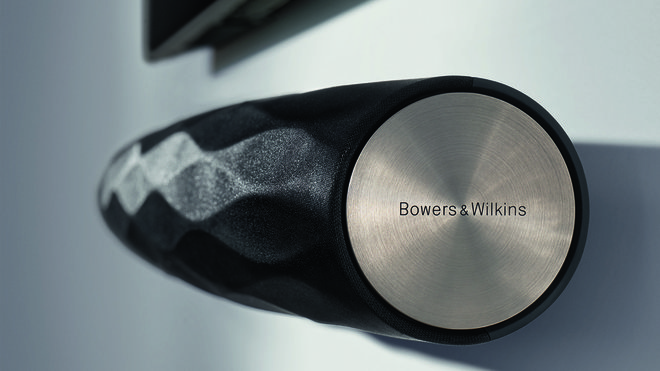
When it comes to movies, the performance remains good, but the soundbar’s inherent limitations are more obvious. While the surround processing is restricted to lossy Dolby Digital, we don’t think most people would notice. However, the absence of deep bass or surround envelopment is more noticeable, robbing modern blockbusters off much of their impact.
However, even if you did chose to expand with a sub and rear speakers, the Formation Bar would still come up short compared to its peers. For the same price you can easily pick up a soundbar and sub combo that supports Dolby Atmos and DTS:X. You’ll also get HDMI connections, high-resolution audio support, built-in smart assistants, and a remote control for your hard-earned readies.
